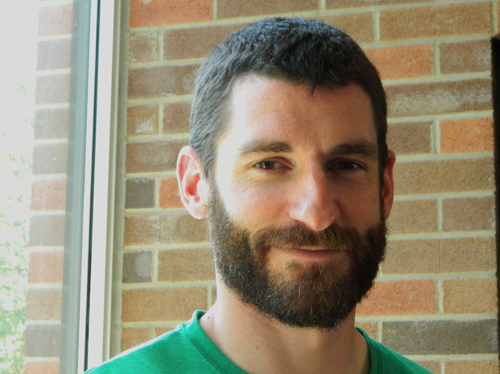
Ever wondered what the inside of a horse’s leg looks like – in 3D? If you’re a horse owner whose animal has a puzzling lameness, or a veterinary student trying to understand the mysteries of equine anatomy, you probably have. OVC clinical studies professor Alex zur Linden may just have the answer.
His website shows the inside of a horse’s leg and gives the viewer the option to rotate the leg so the bones and other structures can be seen from various angles. Labels for the structures can also be added or removed. “I’ve been working on it for two years, so it is exciting to see it completed,” says zur Linden. “It’s been very helpful for vet students and for veterinarians who don’t do a lot of work with horses but need to understand this anatomy when they do.”
That’s not the only innovation zur Linden, who specializes in radiology, is working on. His experiences in using diagnostic technology and his interest in helping people and animals seem to spark some creative research projects.
He grew up in North Vancouver and earned two degrees – one in animal physiology and one in molecular biology and biochemistry – before going to Saskatoon to study veterinary medicine. During his studies he discovered an interest in radiology and decided to get additional training.
“I was tired of the cold in Saskatchewan and the rain in Vancouver, so I decided to go to California,” zur Linden says. He did a one-year internship in Ventura, Calif., “on the ocean and with palm trees in the yard.” This was followed up with a three-year residency at Iowa State University, and from there he came to OVC.
“I wanted to combine my clinical work with teaching and research,” says zur Linden. Since his arrival at the school last fall, he has worked on a two-week rotation, spending two weeks working in the small- and large-animal clinics on campus as a radiologist, and the other two weeks doing research and preparing for classes. From August to May, he has DVM students who work with and learn from him; he is also helping to train a resident in radiology.
He likes the variety of working with both small and large animals. “In one day, I can scan a ferret, bird, dog, horse and cow,” he says.
Although he finds it challenging at times to switch from “clinical mode” to “research mode,” he is clearly excited about the projects he has underway. Besides the website on equine anatomy, zur Linden is also working with a video game controller to help surgeons read radiograph images.
“It’s actually a wii remote,” he says, waving the small, rectangular controller at the computer screen. “It is better configured to your hand and easier to use.”
Currently, a veterinarian who needs to check on a radiograph during surgery would have to step away from the operation and ask a technician to use a computer with a mouse to scroll through the image and find the area of interest. Zur Linden explains that the wii remote can easily be covered with sterile wrapping so the surgeon can simply pick it up, point it at the computer screen and use the buttons to move the image as needed. It’s much easier and takes less time away from the surgery.
“We did a small study to see how effective this would be and found that using the wii remote was easier on the wrists and hands of the people using it when compared to a computer mouse. In terms of accuracy in reading and using the images, the results were about the same,” he says, adding that he is currently writing an article about it.
Another project looks at a new way to attack cancer using microwaves. The device looks like a thick metal needle with an antenna on the end that is connected to a microwave generator. Zur Linden uses ultrasound, computerized tomography (CT) scans or magnetic resonance imaging (MRI) to guide him as he directs the needle to a cancerous mass in an animal’s body and turns on the microwaves to destroy the tumour cells around the antenna.
“The whole goal is to avoid doing surgery,” he explains. “It is a minimally invasive procedure. Similar techniques have been used with people and found to be as successful as surgery.” However, there are risks; healthy cells can also be destroyed or damaged by the microwaves, and the cancer must be within an organ.
Zur Linden provides an example: “If a dog had four cancerous lobes in his lungs, it wouldn’t be possible to remove them all at once, because he wouldn’t have enough healthy tissue left to breathe. It would kill him. But if we used this approach to remove the three smallest ones, then we could surgically remove the largest one, and give the dog a better chance of surviving.”
He also has funding to develop a device to biopsy masses in the bladders of small animals that weigh less than 10 pounds, using ultrasound to guide the removal of a small piece of tissue. “Currently the options are surgery or using a device with a camera. This will be smaller and less invasive,” he explains.
Zur Linden and his girlfriend, a large-animal veterinarian in private practice, recently moved to Elmira, Ont., with their two cats and chocolate Lab, and now have “become addicted” to the Cross Fit exercise program. “You are exhausted after every single workout, but it is a great way to get in shape,” he says.